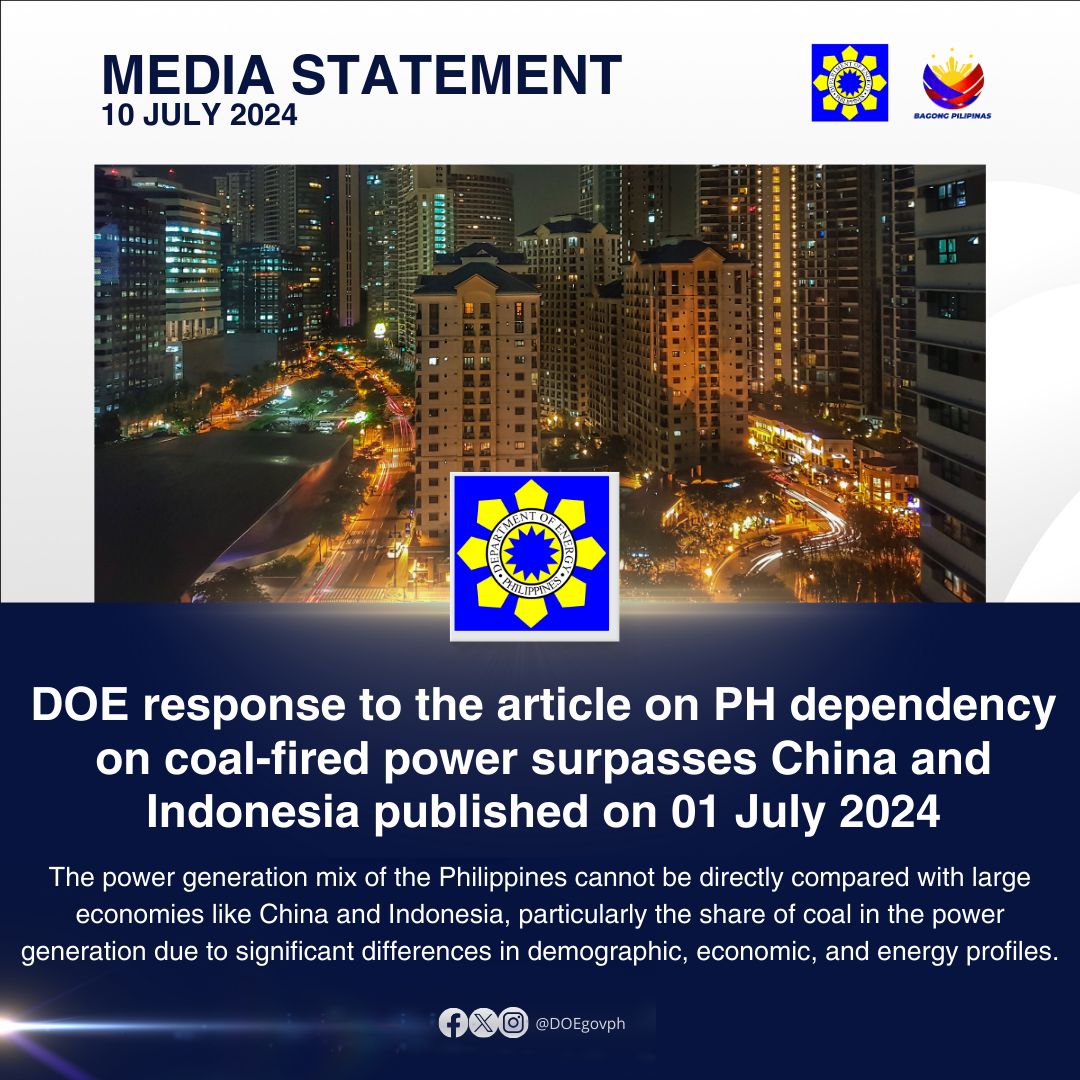The power generation mix of the Philippines cannot be directly compared with large economies like China and Indonesia, particularly the share of coal in the power generation due to significant differences in demographic, economic, and energy profiles.
Based on Global Energy Monitor Report, as of January 2024, China has an installed coal power plant capacity of 1,136.7 GW, Indonesia has 51.6 GW, while the Philippines has only 12.1 GW. This underscored the vast difference in the scale of energy economic infrastructures among the three countries.
Moreover, the disparity is evident in the gross generation mix from coal power plants. In 2021 alone, China generated 5,417, 848 GWh from coal, Indonesia generated 189,683 GWh while the Philippines only generated 65,052 GWh. Even with the increase to 69,472 GWh in 2023, the Philippines’ figures remain significantly lower than those of China and Indonesia.
While coal remains to have the largest share in the country’s power generation mix, the Philippines makes up a minimal share of global emissions from coal. Based on the European Commission - Emissions Database for Global Atmospheric Research (EDGAR) on GHG Emissions of All World Countries 2023 Report, in 2022, China remained the largest greenhouse gas emitter globally, contributing 29.2% of total emissions. Indonesia ranked 7th, with a 2.3% share of global emissions. In contrast, the Philippines accounted for just 0.5% of the world’s greenhouse gas emissions.
While the Philippines relies heavily on coal-fired power generation, the absolute amount of generation and corresponding emissions are minimal as compared to those of China and Indonesia. Therefore, the Philippines, cannot be reasonably compared to these larger economies, which have different energy strategies and infrastructures adapted to their specific demographic and economic conditions.
Under the 2023-2050 Philippine Energy Plan (PEP), the Philippine energy framework will be transformed towards cleaner, more resilient, and sustainable energy systems. This aligns with the global energy transition and involves strategic endeavors aimed at contributing to and advancing a low-carbon energy future. With vast renewable energy resources, the country is embarking on various initiatives to further explore and accelerate the development and increase the utilization of clean and indigenous energy sources. The goal is to provide a 35 percent share in the power generation mix by 2030 and 50 percent by 2040. ###

